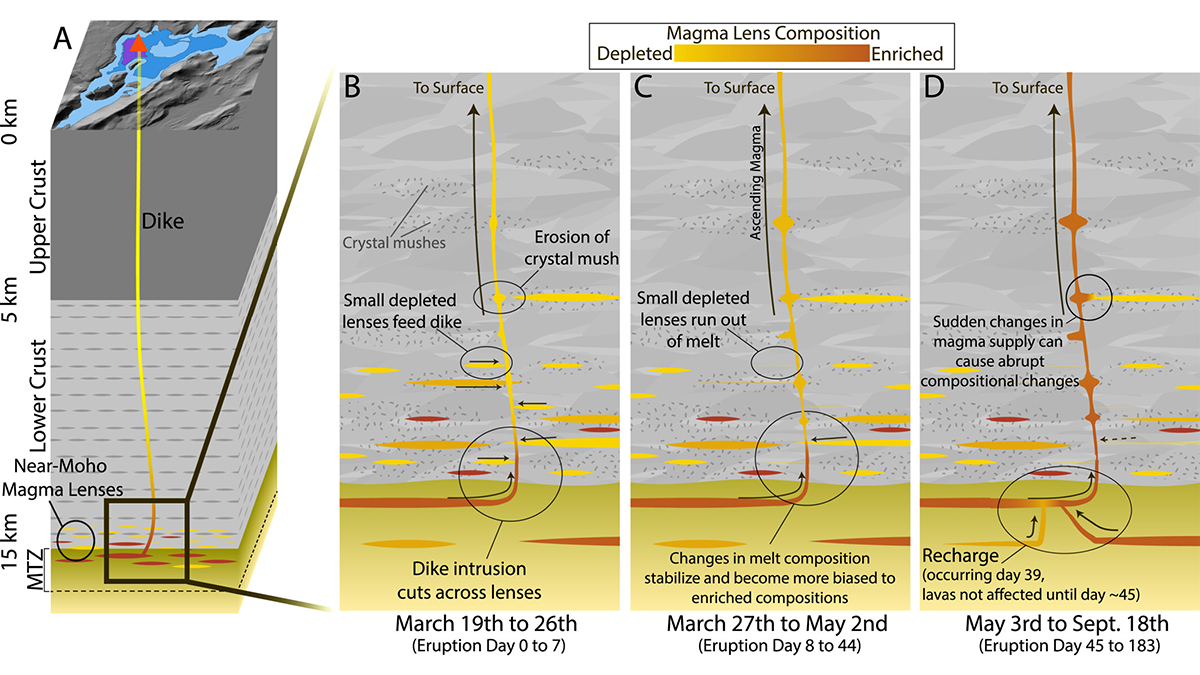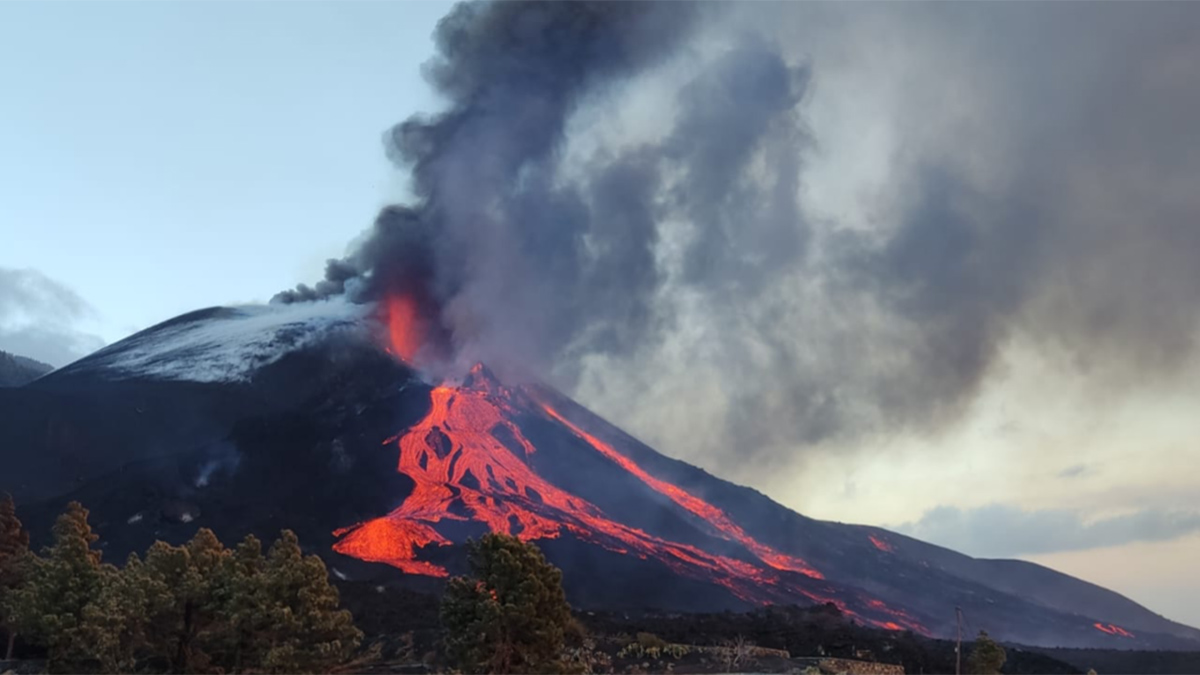By analyzing sulfur and volcanic ash entrained in ice cores, researchers pinpointed a caldera in the remote Kuril Islands as the site of an unidentified 19th century eruption.
geochemistry
Magma Diversity in Iceland
Iceland’s recent basalt eruptions originated at the crust-mantle boundary and show chemical variability over remarkably short timescales of weeks, suggesting exchanges between diverse magma sources.
Nebraska High Schoolers Test Well Water Quality
The Know Your Well program gives high school students experience in hands-on STEM research while providing community members information about their water quality.
Pluto’s Small Moons Are Unlike Any Other
The strange blend of surface chemistry on Nix and Hydra raises big question about the evolution of the Pluto system.
Hot Spot Lavas Around the World May Have Something in Common
A global study of lavas from volcanic hot spots suggests that contrary to accepted wisdom, Earth’s deep mantle may have the same composition throughout. Not everyone is convinced, however.
Microbe Preferences Drive Ocean Carbon Pump
New research offers insight into how certain bacteria degrade organic matter in Earth’s oceans.
Earthquakes May Lace Quartz Veins with Gold
Seismic activity may kick off chemical reactions that seed nuggets of gold.
Volcanic Anatomy, Mapped as It Erupts
Testing during the 2021 Tajogaite eruption on La Palma demonstrated the value of near-real-time petrological analyses as a supplement to seismic and geochemical data for eruption monitoring.
The Origin of the Moon’s Thin Atmosphere Might Be Tiny Impacts
Minuscule meteoroids slamming into the lunar surface could be kicking up most of the atoms that make up the lunar exosphere.










